Spain stretches magnificently from the Pyrenees Mountains to Africa’s shores, offering something extraordinary in every corner. While Spain once expanded to create today’s 500-million-strong Spanish-speaking family worldwide, we’re heading to the original source—the one and only Spain. More specifically, we’ll be dipping our toes into the Alboran Sea and exploring Malaga, a city where history breathes in every corner.
A City of Many Lives
Malaga captivates visitors with its rich tapestry of history. This sun-blessed city boasts an impressive 300 days of sunshine yearly, a harbor glittering with luxury yachts and majestic cruise ships, and beachside cafés sizzling with espeto (grilled sardines).

But Malaga offers much more than just Mediterranean charm—it cradles stories from Phoenician times, proudly claims Antonio Banderas as a native son, and even serves as American gangster Alvin Karpis’s final resting place.
Malaga ranks among Europe’s oldest continuously inhabited cities, founded around 770 BC by Phoenician traders who journeyed from the Middle East. Though their homeland was modest in size, these merchants and sailors profoundly influenced the ancient world. Their cultural footprints dot the entire Mediterranean coastline. Our first encounter with them was on Cyprus.
Even Malaga’s name reveals deep Phoenician roots. Linguists believe “Malaga” derives from the Phoenician word “malaka,” meaning “salt.” The early Phoenicians who arrived in Malaga recognized the region’s abundant salt deposits—an incredibly valuable and strategic commodity in pre-refrigeration days. Think of salt as the ancient world’s Bitcoin, only having more taste and significantly more useful.
Interestingly, modern Semitic languages still use similar-sounding words for salt: Hebrew’s “melach,” Amharic’s (Ethiopia) “melas,” Tigrinya’s (Eritrea) “melih,” Maltese’s “melh,” and Arabic’s “milḥ.”.
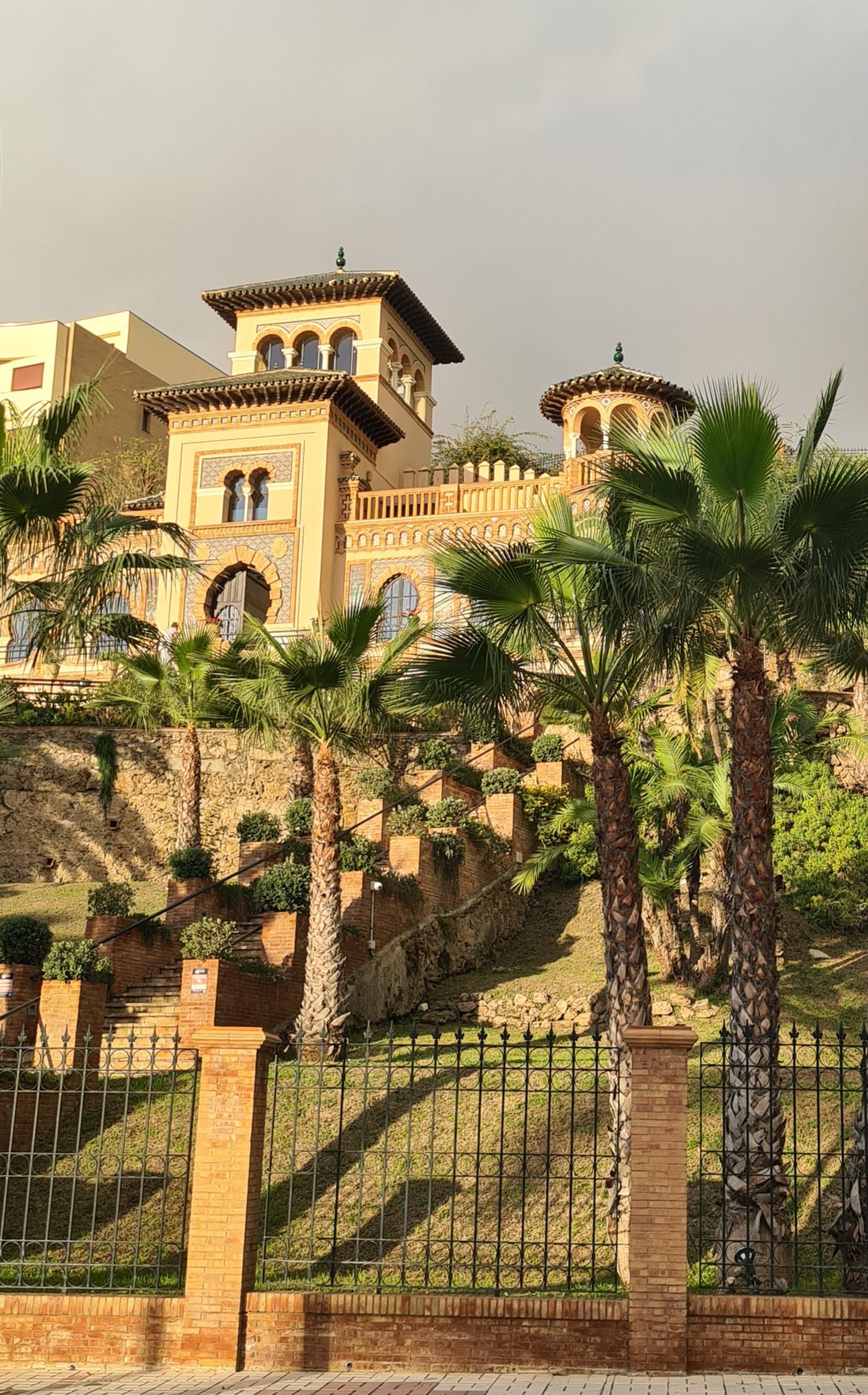
After the original Phoenicians came… well, more Phoenicians—just with a rebranded. Now calling themselves Carthaginians, these conqueror-merchants upgraded Malaga’s simple trading port with a defensive fort. Then came the Punic Wars—three epic showdowns between Rome and Carthage, two ancient superpowers unwilling to share the Mediterranean playground.
The most famous of these conflicts, the Second Punic War, saw Carthaginian general Hannibal make an unforgettable impression on Rome. His legendary trek across the Alps with an elephant brigade became one of military history’s most dramatic moments. That’s how you wage war “in style.”
Unfortunately for Carthage, style wasn’t enough. History delivered a harsh verdict, wiping Carthaginians from the political map. Roman military strategy, organization, and political flexibility ultimately triumphed over Carthaginian military genius. Malaga and its surrounding regions entered a new historical chapter under Roman rule, renamed Baetica to mark its official incorporation into the Roman province.
The Roman Theater (Teatro Romano) stands as one of Malaga’s most striking authentic Roman cultural testimonies—a living historical monument dating to the 1st century BC. Built during Augustus’s reign, it ranks among Malaga’s oldest surviving archaeological sites.
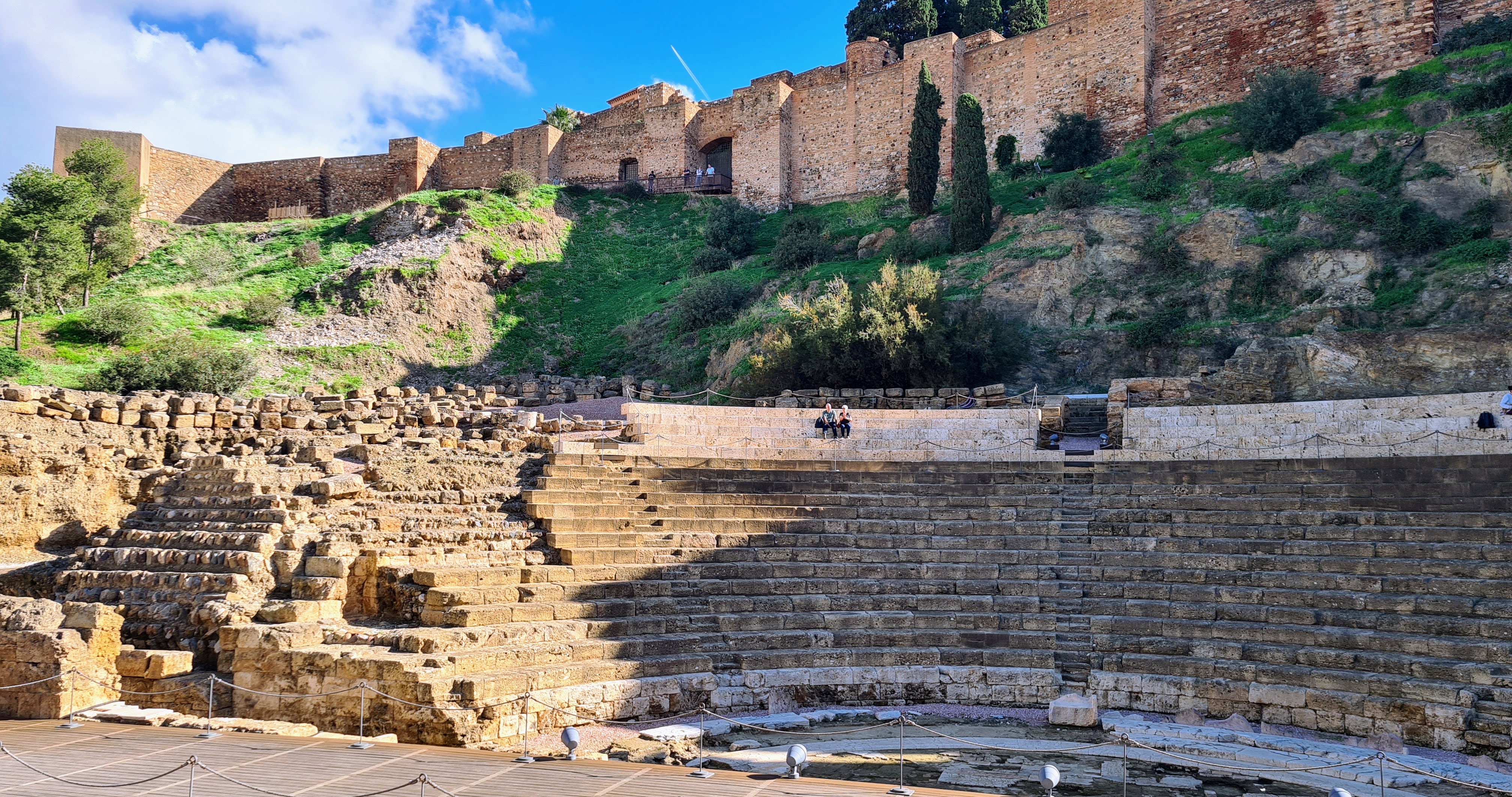
The theater, capable of seating approximately 1,500 spectators, utilized Malaga’s natural terrain with impressive engineering skill. Its discovery story adds another fascinating layer—workers stumbled upon its foundations entirely by accident in 1951 during library reconstruction work. This unexpected find forced a relocation of the library and opened an entirely new chapter in Malaga’s history.
Today, only the seating area remains intact. When powers after Roman empire conquered Malaga, they dismantled the theater’s most beautiful section—the stage—repurposing its marble and stone blocks for other construction projects. The remainder lay hidden beneath thick layers of earth for centuries until Malaga reclaimed this piece of its Roman heritage.
From Visigoths to Islamic Malaga
After Western Rome’s collapse, the Visigoths took control of Malaga between the 5th and 7th centuries, establishing it as a provincial center in their kingdom. Little did they suspect that new wave was forming 4,000 kilometers away in Medina that would soon transform Malaga forever.
Islam spread with lightning speed, first conquering North Africa before reaching Gibraltar. In 711, Muslim forces crossed the strait, and within just one decade, Islamic rule was in most of the Iberian Peninsula. The old Visigothic Christian order quickly crumbled, replaced by a new social and religious system. Thus began Al-Andalus.
In Malaga, increasingly elaborate walls rose on the old fort’s foundations, earning the Moorish name “Alcazaba.” Arabic terms often begin with the prefix “al” (as in Al-Andalus and Alcazaba). The Alhambra, another magnificent example, will await our attention when we return to Spain.
Linguistic detour: The Middle East served as the center of scientific advancement during medieval times. Arab scholars made invaluable contributions to mathematics, medicine, astronomy, and philosophy. This intellectual heritage is reflected in numerous words derived from Arabic: algebra, alcohol, alchemy, algorithm, almanac, and even elixir (from al-iksir). The Arabic influence extends to astronomy as well, with numerous star names beginning with “al” (including three in the Great Bear constellation alone). Now let’s return back to Malaga.
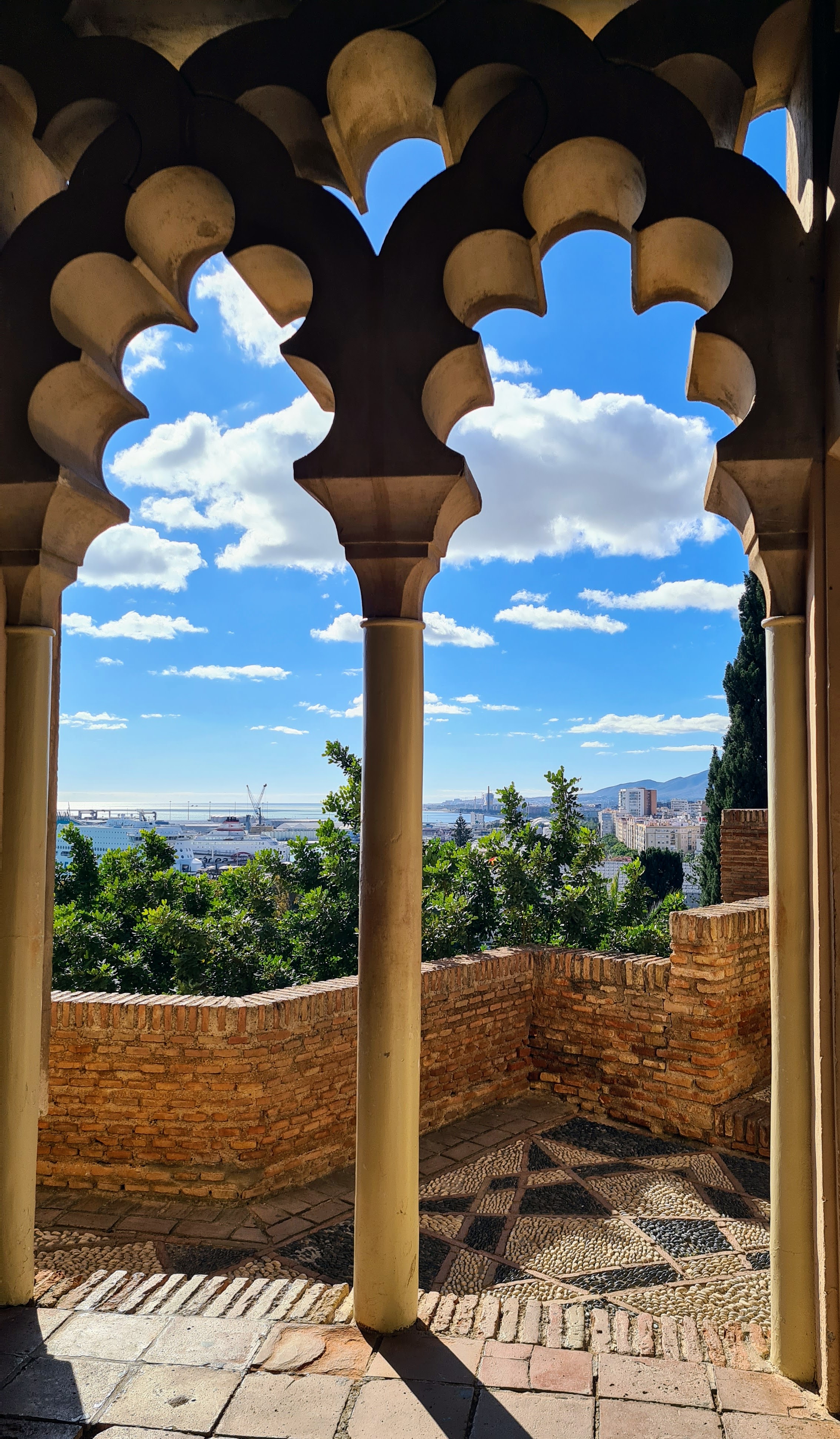
The term “Alcazaba” originated from the Arabic “al-qasbah,” describing a fortified structure protecting a city, ruler’s palace, or strategic territories from potential attacks.
Historically, Malaga’s Alcazaba fortress stood directly on the sea shore, serving dual functions—ruler’s residence and city defense system. This quintessential Moorish fortress seamlessly combines strict defensive purpose with architectural luxury. Malaga’s Alcazaba boasts not only thick, high walls but also impressive gardens, enchanting fountains, decorated courtyards, and sophisticated water delivery systems.
The fortress’s defensive superiority reflects engineering genius. Double stone walls surround it, while cleverly designed zigzagging pathways complicated enemy invasions even more. These winding paths feature numerous gates, with the most famous being Porta de la Justicia (Justice Gate). All gates share a common characteristic—their narrow width gave defenders a clear strategic advantage.
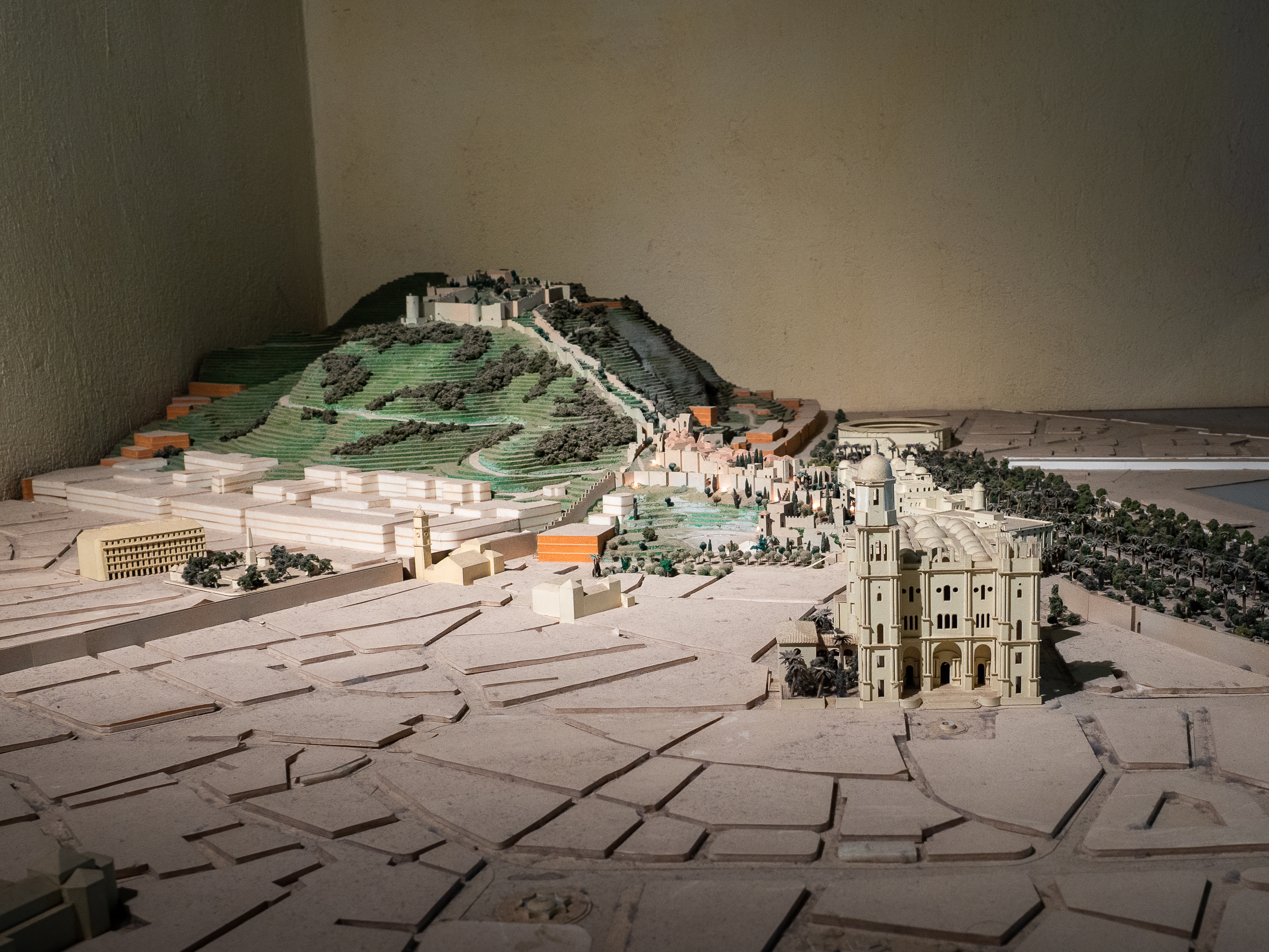
Tourists flock to see the authentic Moorish-style arches and Nasrid Palace courtyards. Consider this Malaga treasure a simplified Alhambra version at an extremely accessible price. Since the Alcazaba ranks as Malaga’s most visited attraction, I recommend arriving early when it opens to avoid massive tourist waves.
Rising beside the Alcazaba, Gibralfaro Castle—built in the 14th century—strengthened Malaga’s Alcazaba defenses. These structures once connected through defensive walls, but today visitors must exit the Alcazaba grounds and climb a winding path alongside the walls to visit both. Don’t forget to admire the historic bullring from above during your journey.
Visitors can purchase a combined ticket for 5.50 euros to access both sites. However, if you’re feeling lazy or short on time, I recommend focusing on the Alcazaba. For those wanting to avoid the climb but still experience Gibralfaro, buses can transport you to the top.
The name “Gibralfaro” has fascinating etymology—derived from Arabic “Jabal al-Farū.” “Jabal” means rock or mountain, while “Farū” refers to a lighthouse. This “Mountain Lighthouse,” perched 132 meters above sea level, features well-preserved defensive walls perfect for walking.
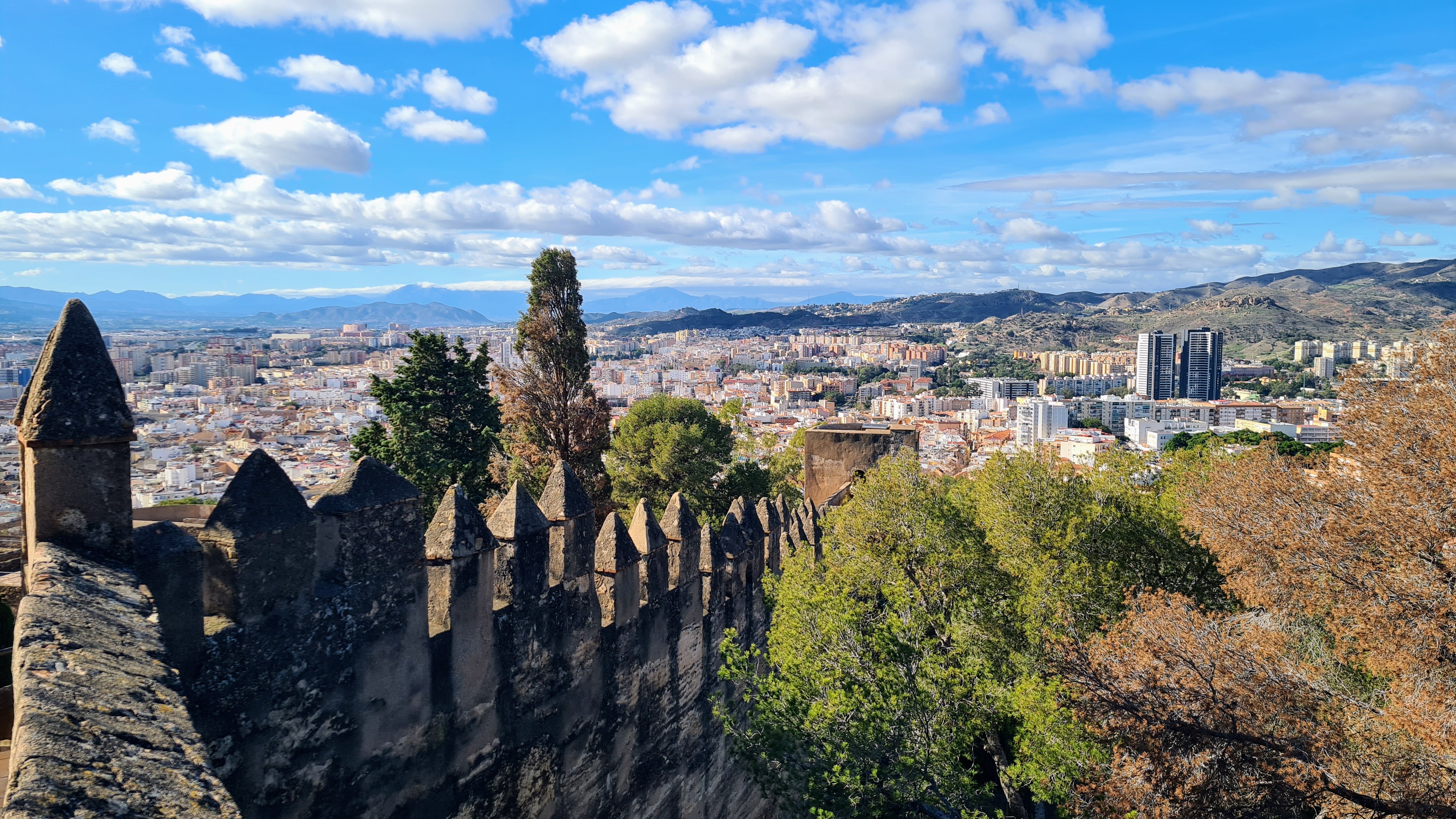
Reconquista: A Turning Point
In 1487, Gibralfaro Castle hosted one of the last Moorish battles against Spain’s Catholic monarchs. Without diving too deeply into details, Christians in the Iberian Peninsula began stirring as early as the 8th century. Historians mark 718 as the beginning of the Reconquista, but the movement gained tremendous momentum when Ferdinand of Aragon and Isabella of Castile united their kingdoms and forces through marriage.
A few years after their wedding (1482), an active military campaign began against the Emirate of Granada. Malaga held particularly strategic importance—a major Mediterranean port supplying Granada and maintaining commercial ties with North Africa.
On May 5, 1487, Christian forces led by Ferdinand and Isabella reached Malaga. The city faced complete siege while Castile’s navy blockaded the port. The four-month siege ended on September 18, 1487, when Malaga finally surrendered. This marked one of the last Moorish fortresses lost before Granada’s final fall in 1492. Malaga was integrated into the Kingdom of Castile and Christian settlers populated the city, initiating another transformation phase.
One essential religious transformation involved replacing old sanctuaries with new faith buildings. In 1500, construction began on Malaga Cathedral at the former mosque site, symbolizing Catholicism’s triumph. However, these works perfectly illustrate the Spanish work methodology called “mañana” (tomorrow)—construction stretched into the 18th century.
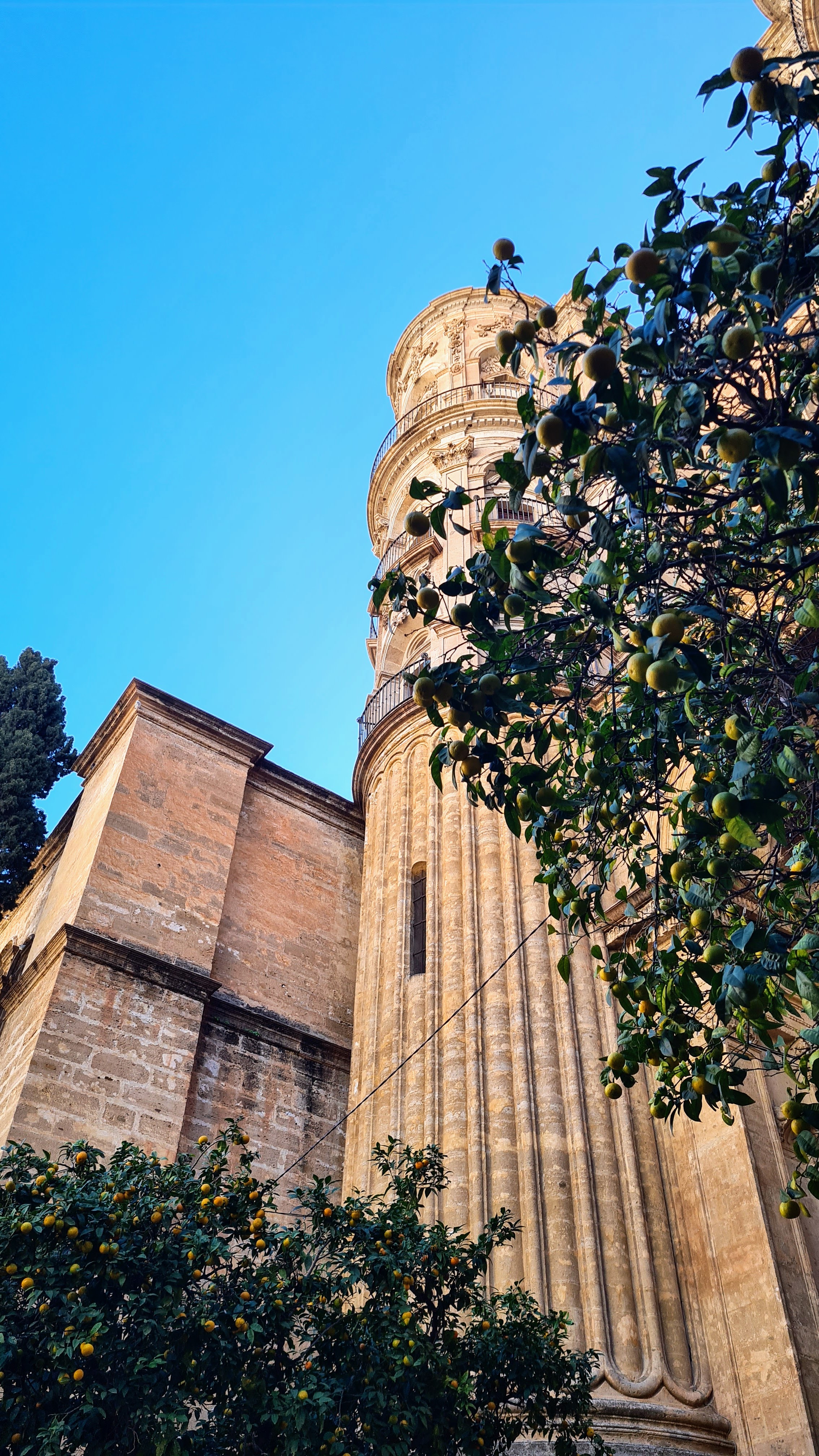
Such prolonged building created a unique architectural phenomenon—Malaga Cathedral became a veritable style collection housing Gothic, Renaissance, and Baroque elements. By the 18th century, everything should have been completed, but history decided otherwise. Funding shortages halted construction—the cathedral remained without planned facade statues and its second tower.
This architectural “incompleteness” earned a symbolic nickname in Malaga—”La Manquita” (The One-Armed Woman). Most remarkably, Malaga’s citizens take pride in this imperfection! Once, city authorities even let residents choose: repair the main Old Town street or finish the cathedral tower. The decision was clear—the street proved more important than the tower. The “one-armed” cathedral transcended architectural deficiency to become part of Malaga’s character and uniqueness.
Our plans included climbing onto the cathedral roof—we purchased 10-euro tickets for this experience. Unfortunately, in 2024, the roof closed for reconstruction. Following the mañana tradition, we’ll apparently return in about three centuries to get to the rooftop.
Our ticket price included an audio guide-accompanied tour inside the cathedral. The highlight—an exceptional choir tribune in the center, adorned with subtle cedar wood carvings. Two magnificent 18th-century organs frame the tribune laterally, still used for concerts and religious ceremonies today. These organs, decorated with gold and sculptures, produce sound considered among Spain’s finest.
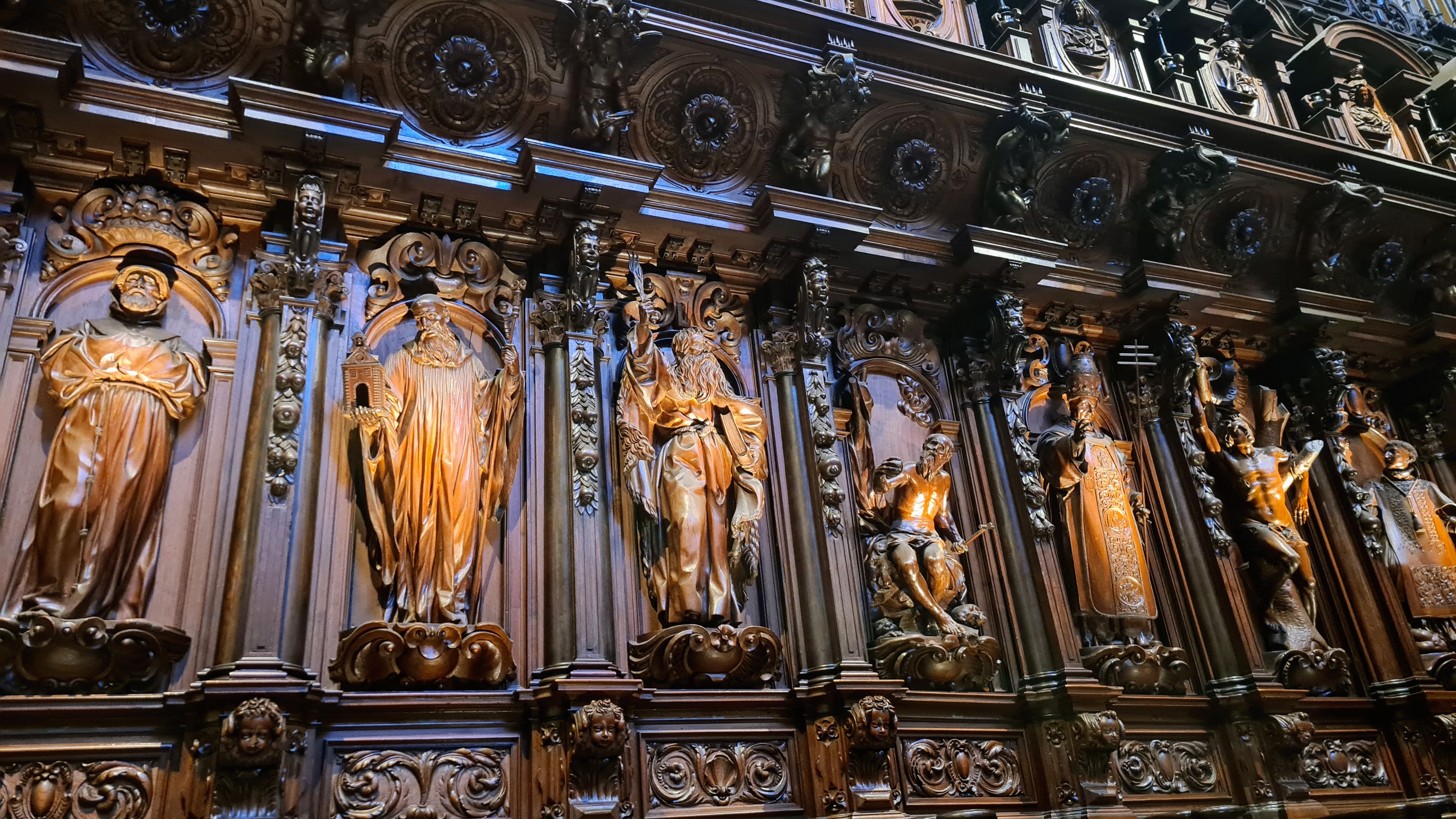
Ferdinand and Isabella not only dispatched Christopher Columbus on his journey but also initiated one of history’s most controversial institutions—the Spanish Inquisition. This institution, operating from 1478 to 1834, became a complex historical phenomenon shadowing Malaga’s streets.
Officially created to preserve Catholic faith purity, the Inquisition quickly transformed into a symbol of repression, political control, and fear. Its influence proved so profound that even later extremist organizations, such as the Ku Klux Klan, drew inspiration from religious robes of that era. Today, similar robes still appear during Semana Santa (Easter Week) in Malaga, though their symbolism has dramatically changed.

The Inquisition primarily aimed to detect and punish Jewish and Muslim converts who formally accepted Christianity but were suspected of secretly practicing their previous faith. Inquisitors conducted interrogations, often employing torture to extract confessions, culminating in the auto-da-fé. Even by contemporary European standards, this represented an extremely cruel method. In short, things got seriously out of hand in Malaga and beyond.
Ferdinand and Isabella became pivotal in Spain’s dynastic history, opening doors to Habsburg rule. Their daughter Joanna I married Philip I the Handsome—a Habsburg dynasty representative. This marriage laid foundations for Austrian family dominance in Spain. Their son Charles I became Spain’s first Habsburg ruler, ushering in the era when Habsburg jaw line began to widen.
Habsburg rule in Spain lasted approximately 200 years. The dynasty ended dramatically—the last king suffered more physical and psychological health problems than a station district prostitute. The Bourbon family assumed power and continues to reign in Spain today, with brief interruptions during Napoleon’s and Francisco Franco’s rules.
Atarazanas, The Cenachero and Unexpected Visitors
Another structure recalling Moorish times is Malaga’s Atarazanas Market. Its name derives from the Arabic word “al-maṭraza,” meaning a place dedicated to shipbuilding. In 1868, authorities decided to demolish old Atarazanas structures but preserve the original Arabic entrance arch dating from the 14th-century Nasrid dynasty. The colored stained glass above the entrance depicts historical Malaga scenes, including the port, mountains, and the city’s most important monuments. Later rebuilt, the market officially opened in 1879, becoming one of Malaga’s most important marketplaces.
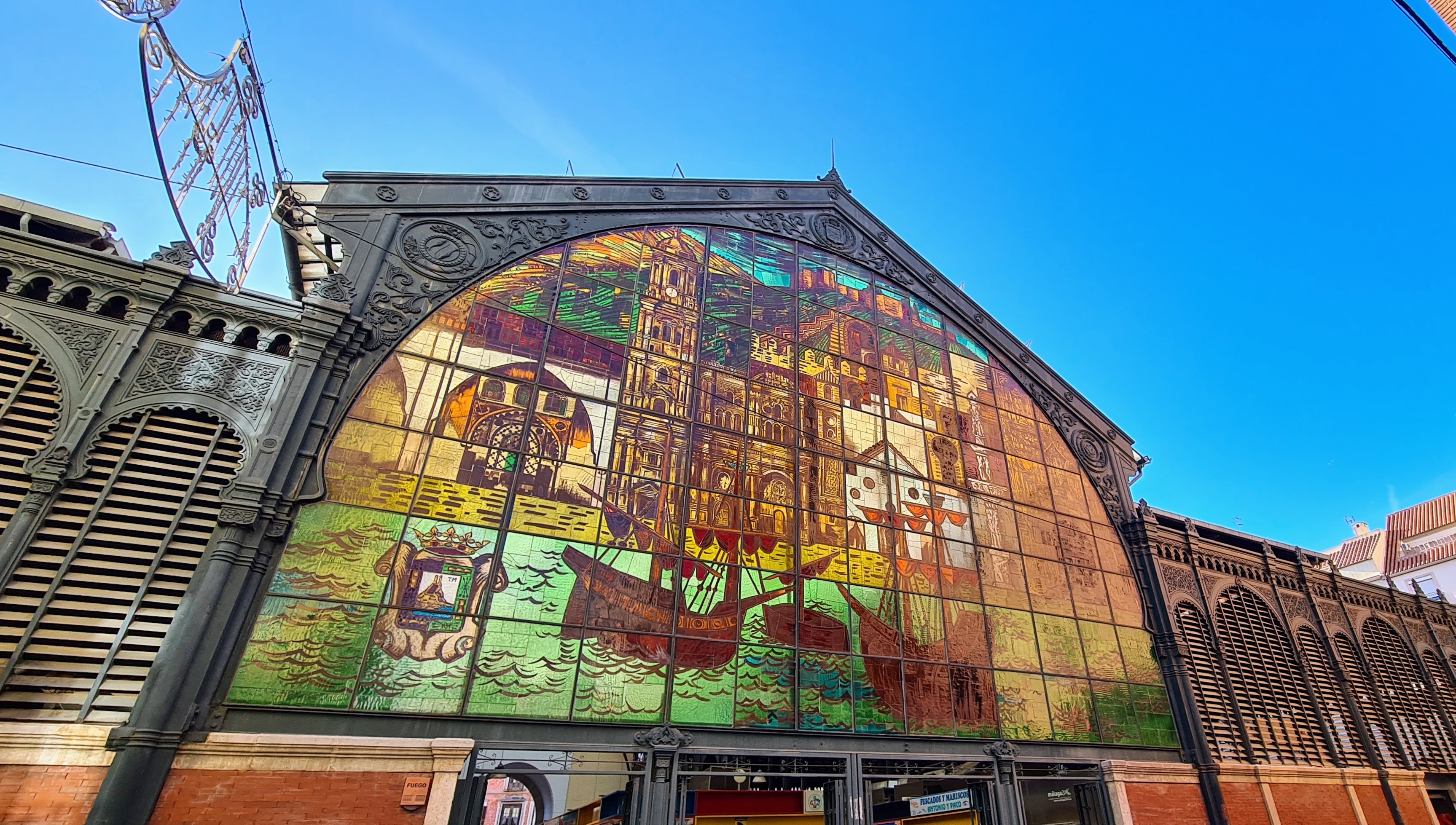
Today, Malaga’s market offers countless goods, with olive, Spanish ham, and fish sections leaving particularly strong impressions. The latter delights the eye with seafood abundance—including species I’d never seen before. If planning to visit, I recommend arriving before 1 PM. Later, fish traders head home, and half the market’s charm disappears.
Speaking of history and traditions, one special symbol connected to Malaga’s market and local identity deserves mention. A short distance from Atarazanas Market stands the Cenachero statue, honoring traditional Malaga fish sellers who walked streets with woven baskets (cenacho). El cenacho represents a traditional Andalusian basket, typically woven from reeds or straw.
This fish vendor, standing in Plaza de la Marina, has become Malaga’s symbol—not just for his daily work but for the vibrant city spirit he embodied. The statue reminds visitors of times when Malaga breathed to the rhythm of fishermen, traders, and bustling markets.
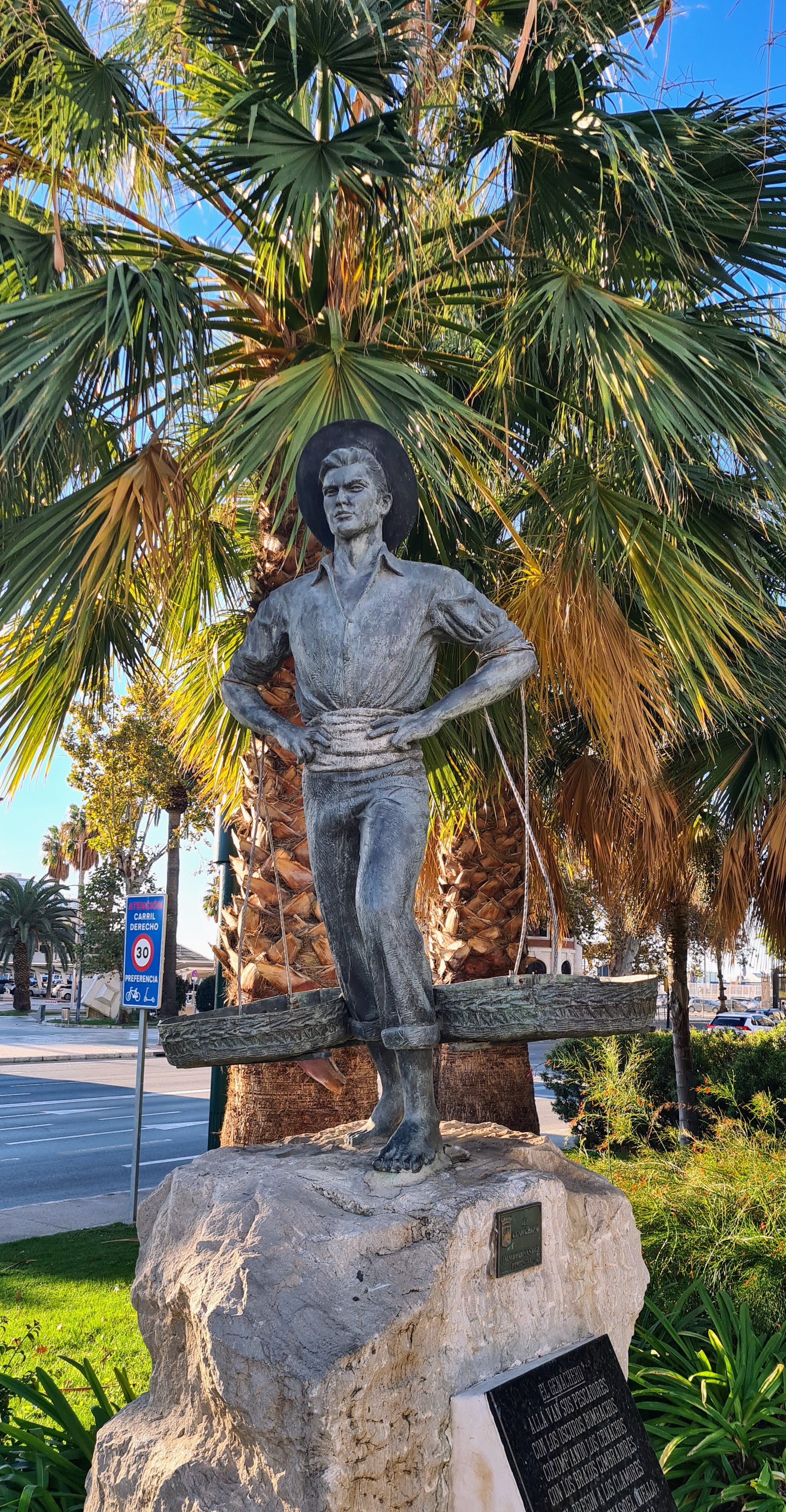
Across the busy street stands another perhaps unexpected statue. Seated peacefully on a bench with a book in hand, as if ready to tell a new tale, sits a bronze figure of Hans Christian Andersen. Why Andersen in Malaga? It turns out the author visited this city in 1862 and fell in love with its atmosphere, climate, and people. He described his impressions in a travel book, emphasizing Malaga’s beauty and calling it “a city with undisturbed tranquility.”
About cubism and beyond
While Andersen’s presence surprises slightly, I won’t shock anyone by mentioning Malaga’s most famous personality—Pablo Diego José Francisco de Paula Juan Nepomuceno Crispín Crispiniano María Remedios de la Santísima Trinidad Ruiz Picasso. Or simply Pablo Picasso, if you’re short on breath.
Picasso was born in Malaga on October 25, 1881, in a small square called Plaza de la Merced. His birthplace, now converted into a museum (Casa Natal de Picasso), invites visitors to explore the artist’s childhood environment, family life, and early works. Just steps from his birthplace stands the Picasso Museum (Museo Picasso Malaga), exhibiting over 200 works—from his early experiments to late creations. Entrance costs 12 euros. I recommend purchasing tickets online the day before to choose a convenient time and avoid lines.
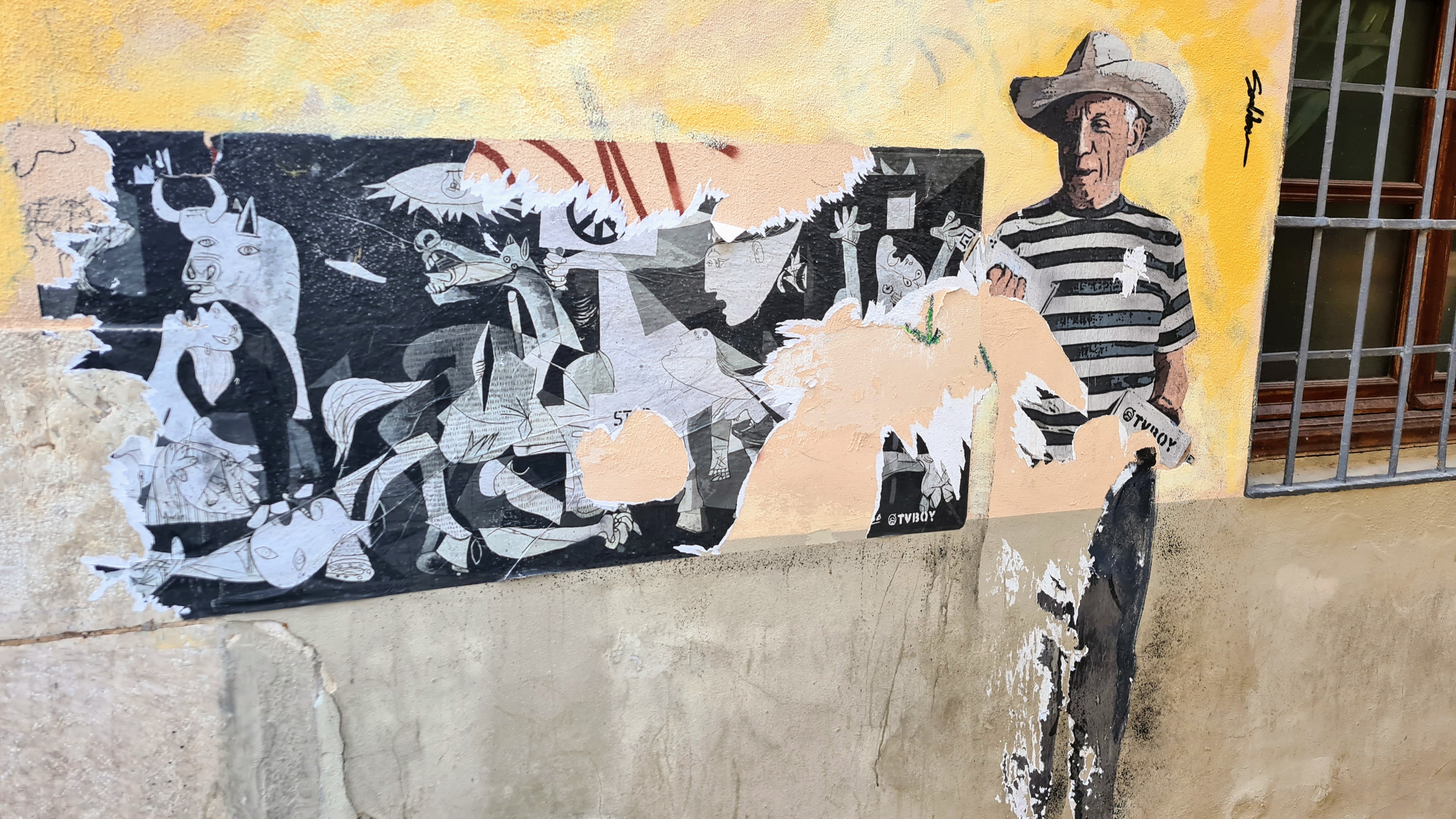
If Picasso’s works seem too avant-garde, try Malaga’s SoHo district, located between Alameda Principal and the port. This area has transformed from a forgotten industrial district into a creative, bohemian space where street art, culture, and contemporary lifestyle blend seamlessly.
Here, visitors can admire impressive graffiti created by both local and international artists like Obey (Shepard Fairey) or D*Face. The district has become an outdoor gallery. Contemporary art galleries, theaters (e.g., Teatro del Soho CaixaBank, supported by Antonio Banderas), creative workshops, and cafés promoting community art projects have established themselves throughout the area. Perhaps SoHo’s most impressive object is right here. Though probably best is simply getting lost in the district’s streets and letting art surprise you!
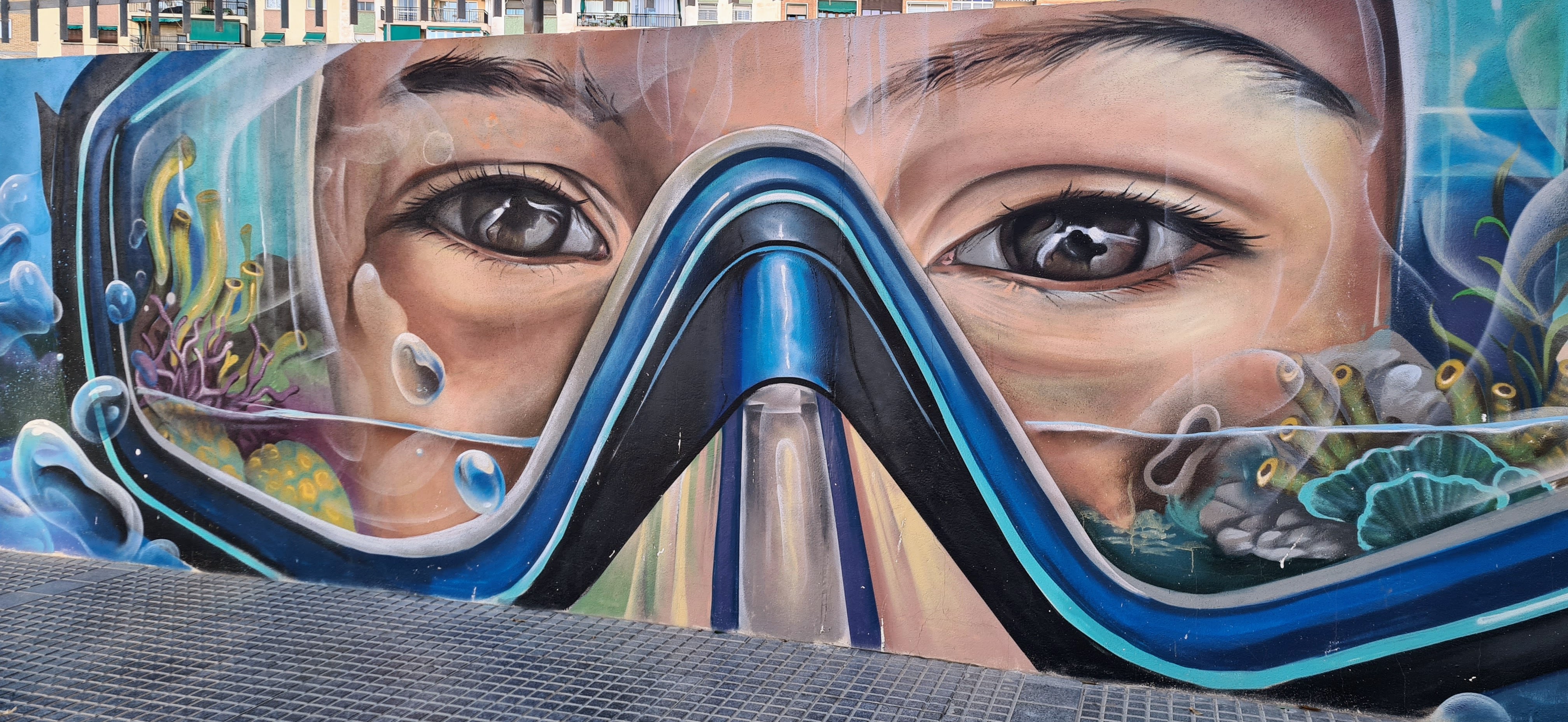
When city exploration becomes tiresome, you can always dip your feet into water at Malagueta Beach. A restaurant promenade stretches nearby. We chose to try octopus (18 EUR) at Cambara café. For budget-conscious travelers still wanting to taste octopus, I recommend visiting this place. Well-prepared octopus “mom’s style” costs 11 EUR here.
We stayed not in Malaga itself but in nearby Torremolinos. Malaga has somewhat higher accommodation prices, so I searched for options outside city limits but with convenient city access. The C1 train line conveniently connects Malaga center with Fuengirola, and our accommodation sat right on the train line. The apartments featured good amenities with the train station just 5 minutes walking distance, though the towels lacked freshness and the windows needed better sound insulation.

